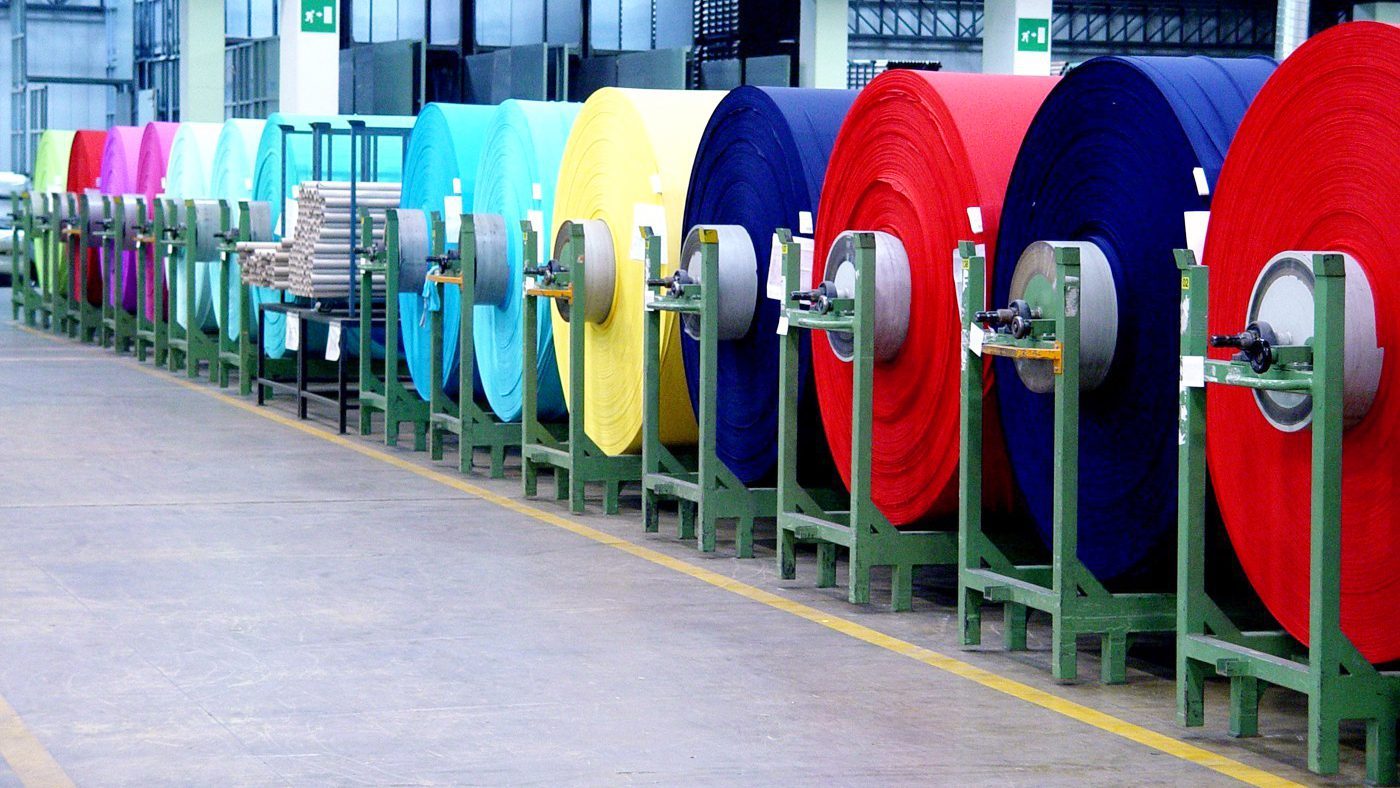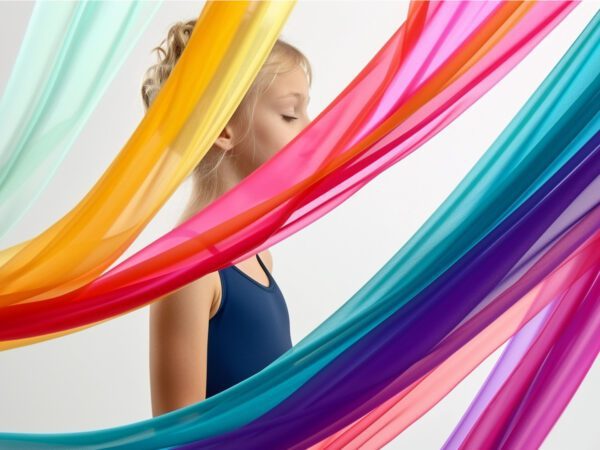
The world of activewear has been transformed in recent years by advancements in stretch fabric innovations. Where activewear was once restrictive and uncomfortable, the integration of innovative stretch fabrics allows clothing that flexes and moves with the body. This revolution in stretch fabrics enhances performance during physical activity and comfort during everyday wear.
Performance activewear utilizes the unique properties of fabrics like spandex and lycra to create clothing that almost feels like a second skin. The excellent range of motion and reduction in muscle fatigue allows athletes to reach new levels in their training. Meanwhile, stylish athleisure wear incorporates the same stretch fabrics to produce clothing that can be worn all day, whether working out or just lounging around.
This synthesis of functionality, aesthetics, and comfort has been made possible mainly due to innovations in stretch fabric technology. By exploring these fabrics’ evolution and integration in activewear design, we can see how they have transformed activewear for both performance and
recreational use.
Evolution of Stretch Fabrics
The beginnings of stretch fabrics can be traced back to the 1930s when synthetics like nylon and polyester were first developed. A team of scientists led by DuPont chemist Joseph Shivers introduced spandex in 1959, initially calling their invention “Fiber K.” This elastic fiber allowed fabrics to stretch up to 5-8 times its original length. Challenging to work with at first, improvements in manufacturing processes brought spandex into mainstream use by the 1970s.
Lycra, another type of stretch fiber, followed shortly after in 1962. DuPont developed lycra with a polyurethane-polyurea copolymer that stretched even further than spandex. Activewear brands quickly adopted these stretch fabrics to create more flexible and form-fitting clothing than previous cotton or wool garments. The sportswear industry found it opened new possibilities in garment design.
More recently, fabric mills have begun developing advanced four-way stretch fabrics incorporating spandex fibers in multiple directions. This allows the material to stretch vertically and horizontally, providing a full range of movement. Many of the latest performance fabrics
also utilize moisture-wicking technology to pull sweat away from the body and quick-drying engineering for increased breathability.
Benefits of Different Sports and Activities
The adaptable, body-hugging nature of stretch fabrics allows for optimized functionality across various physical activities. Sports and workouts with complex movements and a full range of motion see particular benefits.
Yoga clothing emphasizes unrestricted flexibility, with stretch fabrics used for leggings, tanks, and bras. The material bends and stretches with the wearer as they move through different poses and flows. For running apparel, the fabrics maintain a streamlined fit while wicking away sweat and moisture. Gym clothes incorporate stretch meshes and 4-way panels strategically to support free movement through cardio and strength training.
Cyclists often utilize stretch fabrics in form-fitting shorts, jerseys, and compression gear. The aerodynamic compression fabrics are engineered to reduce muscle vibration, and support increased leg blood flow during rides. Triathlon apparel also relies on stretch fabrics that won’t weigh the athlete down in the swim portion or create drag on the bike. Even swimwear uses stretch fabrics—like nylon-spandex blends and bonded neoprene—that retain their shape and compression when wet.
Innovations in Design and Functionality

Beyond the fabrics themselves, brands have innovated with activewear’s construction and design details to unlock stretch fabrics’ full potential. Many garments now utilize flatlock stitching and seamless engineering to eliminate chafing and abrasion against the skin during repetitive motions. Targeted stretch zones and gussets woven into garments mimic the biomechanics of the human body.
For example, many leggings will incorporate extra stretch panels along the inner thigh or behind the knee to allow for a full range of motion. Gussets are added to the crotch area of pants and shorts to accommodate bending and eliminate ripping. These small design elements significantly impact comfort and mobility.
Stretch activewear fabrics also readily apply to sublimation printing and digital embroidered motifs. As the material flexes, the prints and designs flex fluidly rather than cracking. This allows for stunning, oversized graphics and colorful patterns paired with unrestricted mobility. Brands have gotten creative with laser cut-outs, meshes, and 3D prints that heighten stretch activewear’s visual appeal and uniqueness. Search for “embroidery services near me” to check out the nearest store in your area so you don’t miss out on the latest trend.
Impact on Performance and Comfort
The myriad benefits of stretch fabrics ultimately enhance what’s most important in activewear: freedom of movement. Compared to stiffer, heavier fabrics, stretch activewear reduces muscle fatigue and increases stamina. The material flexes with the body, allowing a full range of motion without pulling or resistance.
In addition to improved performance, the fabrics prevent irritation, chafing, or restricted movement during activity. Their compression and breathability also help regulate body temperature and sweat. Rather than enduring an uncomfortable workout, the athlete or active individual can focus on their goals without distraction.
Stretch activewear maintains its elasticity and shape over time. It bounces back after repeated wear and washing instead of getting baggy or misshapen. The fabrics, therefore, provide long-
lasting stability and support. For all these reasons, stretch activewear has become popular even for everyday comfort, errands, and casual activities. It delivers functionality without compromising aesthetic appeal.
Future Outlook
As activewear brands continue responding to consumer demand for garments suitable for high-performance training and all-day wear, stretch fabrics will play an integral role. Industry experts anticipate the development of new stretch fabrics that incorporate horizontal and vertical elasticity for proper 4-way stretch. Some futuristic materials may mimic biomechanical movements with laser-cut flex points and reinforced zones.
Auxetic materials are also on the horizon, engineered to get wider when stretched rather than longer. This space-age fabric would allow for even greater stretch and range of motion than current options. Innovations in 3D printing and custom fabrication may also enable athletes and fitness enthusiasts to design fully personalized stretch activewear tailored to their bodies and sports.
Bright activewear integrating stretch fabrics with wearable technology provides another exciting frontier. Sensory materials could track biometrics, connect with smartphones, and give real-time feedback on performance. Regardless of the innovations, the stretch fabric will continue serving as the foundation for activewear design and functionality.

Over the last several decades, the stretch fabrics revolution has transformed activewear through material science innovations and apparel construction advancements. By embracing the possibilities of fabrics that flex, conform, and move with the body, brands have elevated
performance capabilities and all-around comfort.
Athletes training for their sports see real improvement in stamina and mobility thanks to stretch activewear. Yet recreational fitness participants and lovers of athleisure also reap the rewards of comfort and free movement. Ongoing fabric innovations and strategic design will unlock even more significant potential at the intersection of freedom, function, and fashion. Stretch fabrics have become intrinsic to both professional and lifestyle activewear.
Join Pine Crest Fabrics on LinkedIn and stay informed about the latest news, fashion trends, and fabric updates.






